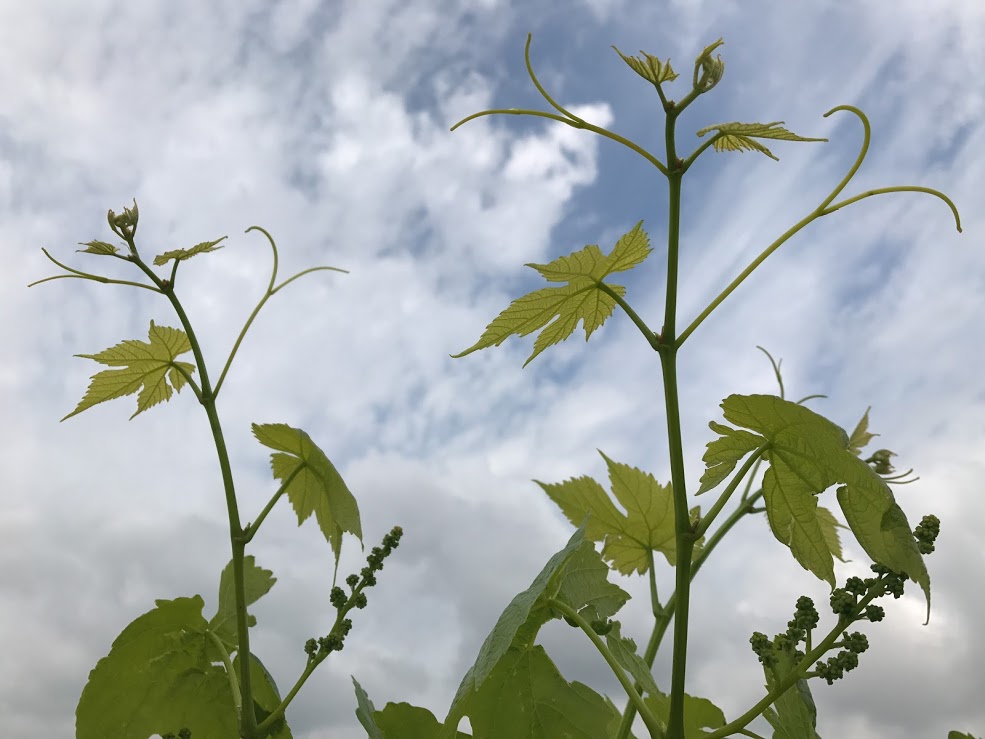Welcome to Vitis Underground!
The home base for a five year, multi-institution project investigating the relationship between root, scion, and environment in grafted grapevines. Many perennial woody crops, like grapevine, are routinely grafted to separate the breeding of roots from shoots, which enables their development, clonal propagation, and distribution into diverse environments. We are interested in how the root system of long-lived plants can contribute to and modify scion phenotype and plasticity, the understanding of which has important applications in crop improvement for a shifting climate. The results of our study will facilitate the development of perennial crops with enhanced phenotypic robustness and plasticity, enabling them to thrive in a range of climates.
This study focuses on grapevine root and shoot interactions through four aims:
Aim 1 uses an existing research vineyard in Mount Vernon, Missouri, to analyze inter-annual phenotypic variation in a common scion,
growing both ungrafted and grafted to three different rootstocks.
Aim 2 assesses environmental influences on root-shoot communication, measured in different rootstock-scion combinations in commercial vineyards distributed across disparate environments in California.
Aim 3 uses a multi-site QTL analysis of rootstock-scion assemblages in a new rootstock mapping population to determine the genetic underpinnings of rootstock effects on scion phenotype.
Aim 4 is to conduct extensive scientific training and public outreach through cross-institutional partnerships to raise awareness about the importance of perennial crops and collaborative science.
This research will delineate relative contributions of the rootstock and other environmental factors to phenotypic variability in the shoot, with a long-term goal of facilitating the development of rootstock-scion assemblages that are suited to different climates. To learn more about each of the aims and follow their progress, click on the pages above.
Aim 1 uses an existing research vineyard in Mount Vernon, Missouri, to analyze inter-annual phenotypic variation in a common scion,
growing both ungrafted and grafted to three different rootstocks.
Aim 2 assesses environmental influences on root-shoot communication, measured in different rootstock-scion combinations in commercial vineyards distributed across disparate environments in California.
Aim 3 uses a multi-site QTL analysis of rootstock-scion assemblages in a new rootstock mapping population to determine the genetic underpinnings of rootstock effects on scion phenotype.
Aim 4 is to conduct extensive scientific training and public outreach through cross-institutional partnerships to raise awareness about the importance of perennial crops and collaborative science.
This research will delineate relative contributions of the rootstock and other environmental factors to phenotypic variability in the shoot, with a long-term goal of facilitating the development of rootstock-scion assemblages that are suited to different climates. To learn more about each of the aims and follow their progress, click on the pages above.
This research project is funded by the National Science Foundation Plant Genome Research Program 1546869, and relies on the collaborative partnerships between its researchers and institutions, including E. & J. Gallo Winery, Missouri Botanical Garden, Missouri State University, Saint Louis University, South Dakota State University, University of Missouri, and USDA-ARS Grape Genetics Research Unit.










